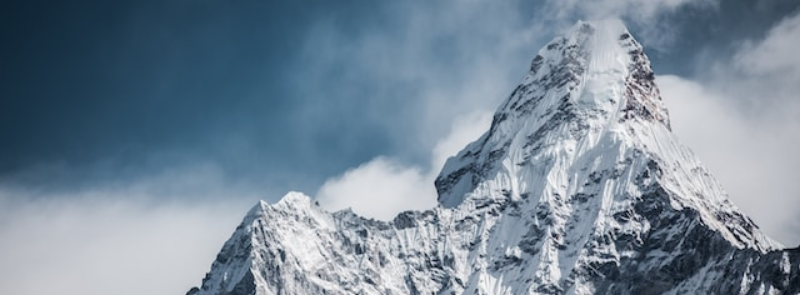
When It Occurs
Every May 29th
Timeline
Days Passed (899)
# Hashtags
#InternationalEverestDay #EdmundHillary
May 29th is observed as International Everest Day, commemorating the historic first ascent of Mount Everest. In 1953, Edmund Hillary from New Zealand and Tenzing Norgay Sherpa from Nepal achieved the remarkable feat of reaching the summit of the world's highest mountain.
Nepal officially established International Everest Day in 2008. Enthusiasts of hiking and mountaineering often celebrate the occasion by climbing to nearby peaks or engaging in other mountain-related activities. Those unable to partake in such endeavors are encouraged to explore the mountain's history by reading about it.
History and Background
- Establishment: International Everest Day was officially declared by the government of Nepal in 2008 to mark the historic ascent of Mount Everest and to promote tourism and mountaineering in Nepal.
- Purpose: The day aims to honor the pioneering achievement of Hillary and Norgay, celebrate the spirit of mountaineering, and raise awareness about the importance of preserving the natural environment of the Himalayas.
Objectives
The primary objectives of International Everest Day are:
- Commemorate the Historic Ascent: Celebrate the first successful summit of Mount Everest and recognize the contributions of Hillary and Norgay.
- Promote Mountaineering: Encourage the spirit of adventure and mountaineering among people worldwide.
- Raise Environmental Awareness: Highlight the need for sustainable practices to protect the fragile ecosystem of the Himalayas.
- Boost Tourism: Promote Nepal as a premier destination for trekking, mountaineering, and adventure tourism.
Celebrations and Activities
International Everest Day is marked by various activities and events organized by mountaineering clubs, tourism organizations, and communities, particularly in Nepal. These activities often include:
- Commemorative Ceremonies: Official ceremonies and events in Kathmandu and other parts of Nepal to honor the memory of Sir Edmund Hillary and Tenzing Norgay.
- Mountaineering Expeditions: Special climbing expeditions and treks to Mount Everest and other peaks in the Himalayas.
- Documentary Screenings: Screenings of documentaries and films about the first ascent of Everest and other notable mountaineering achievements.
- Lectures and Talks: Public lectures, seminars, and discussions by mountaineers, historians, and environmentalists on topics related to Everest, mountaineering, and environmental conservation.
- Photo Exhibitions: Exhibitions showcasing historic photographs of the first ascent and other mountaineering expeditions.
- Social Media Campaigns: Sharing stories, images, and information about Everest, mountaineering, and environmental protection using hashtags like #InternationalEverestDay and #EverestDay.
- Community Events: Local events, including cultural performances, traditional Sherpa ceremonies, and educational activities to celebrate the day.
How to Participate
- Learn About Everest: Educate yourself about the history of Mount Everest, the first ascent, and the significance of the mountain in global and local cultures.
- Watch Documentaries: Watch documentaries and films about Mount Everest and mountaineering to gain a deeper understanding of the challenges and triumphs of climbers.
- Join Local Events: Participate in local events, lectures, and activities organized to celebrate International Everest Day.
- Promote Environmental Awareness: Advocate for sustainable practices and environmental conservation to protect the Himalayas and other natural landscapes.
- Share on Social Media: Use social media to share information, stories, and photos related to Mount Everest and International Everest Day.
- Support Mountaineering Organizations: Donate to or volunteer with organizations that support mountaineering, adventure tourism, and environmental conservation.
Significance of International Everest Day
International Everest Day holds significant importance for several reasons:
- Celebrating Human Achievement: It commemorates one of the greatest achievements in human exploration and mountaineering, highlighting the determination, courage, and teamwork of Sir Edmund Hillary and Tenzing Norgay.
- Inspiring Adventure: The day encourages people to embrace the spirit of adventure and pursue their own challenges and goals, whether in mountaineering or other aspects of life.
- Promoting Environmental Conservation: By raising awareness about the environmental challenges facing the Himalayas, the day advocates for sustainable practices and the protection of fragile ecosystems.
- Boosting Tourism: International Everest Day helps promote Nepal as a top destination for adventure tourism, supporting the local economy and cultural heritage.
Notable Facts About Mount Everest
- Height: Mount Everest stands at 8,848.86 meters (29,031.7 feet) above sea level, making it the highest peak in the world.
- First Ascent: Sir Edmund Hillary and Tenzing Norgay reached the summit on May 29, 1953.
- Naming: The mountain is known as "Sagarmatha" in Nepal and "Chomolungma" in Tibet. It was named Mount Everest in 1865 after Sir George Everest, a British surveyor general of India.
- Climbing Seasons: The most popular climbing seasons for Everest are pre-monsoon (late April to early June) and post-monsoon (late September to early November).
Conclusion
International Everest Day is a celebration of one of the most iconic achievements in human history, honoring the legacy of the first climbers to summit Mount Everest. It promotes the spirit of adventure, encourages environmental stewardship, and highlights the importance of preserving the natural beauty and cultural heritage of the Himalayas. Through education, awareness, and community engagement, the day inspires people worldwide to appreciate the wonders of the natural world and strive for their own extraordinary accomplishments.


